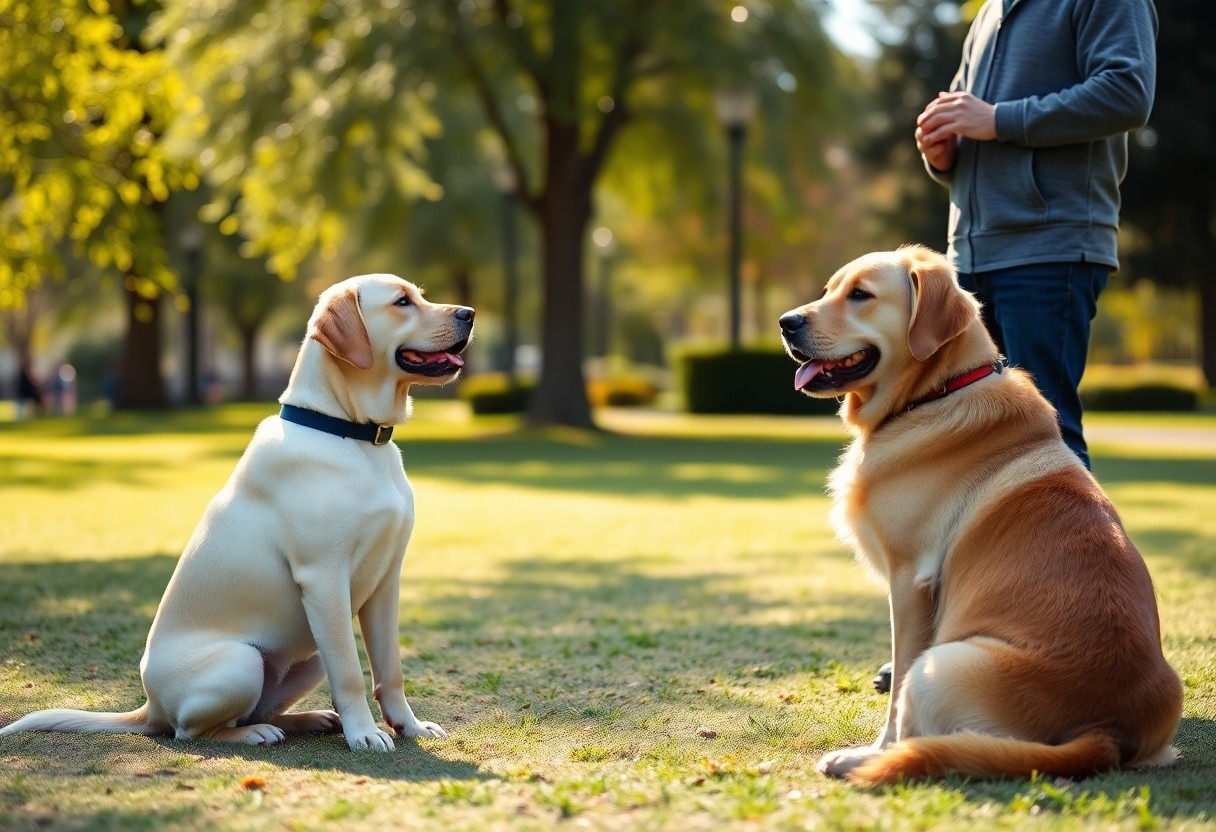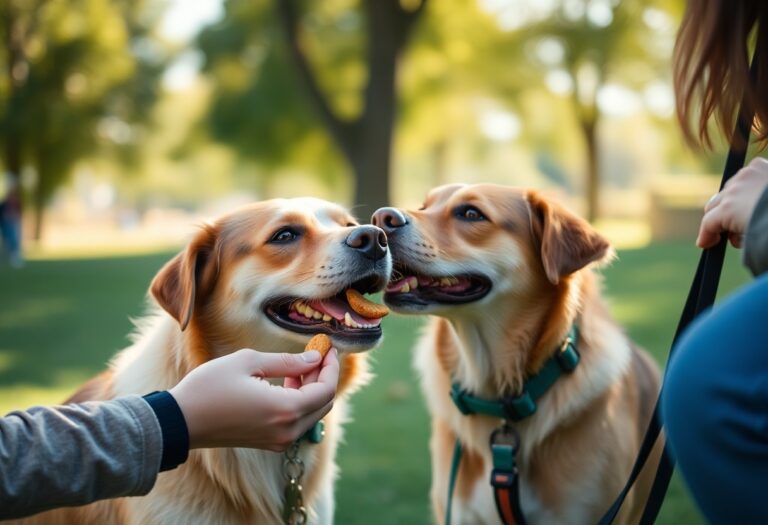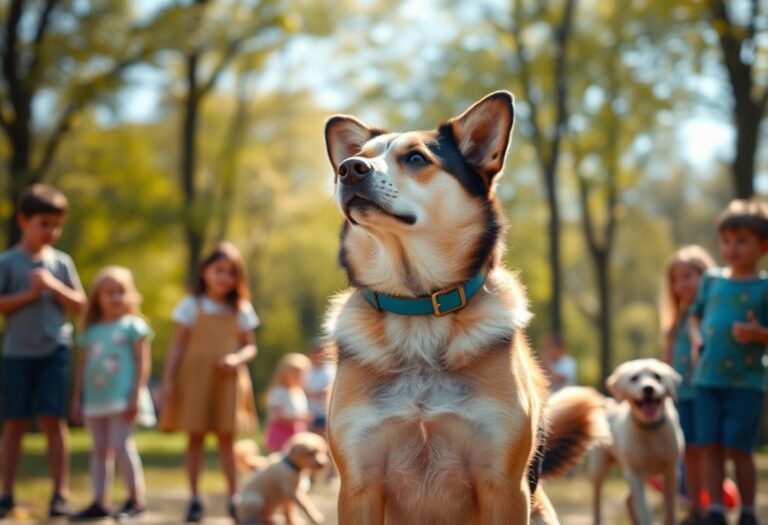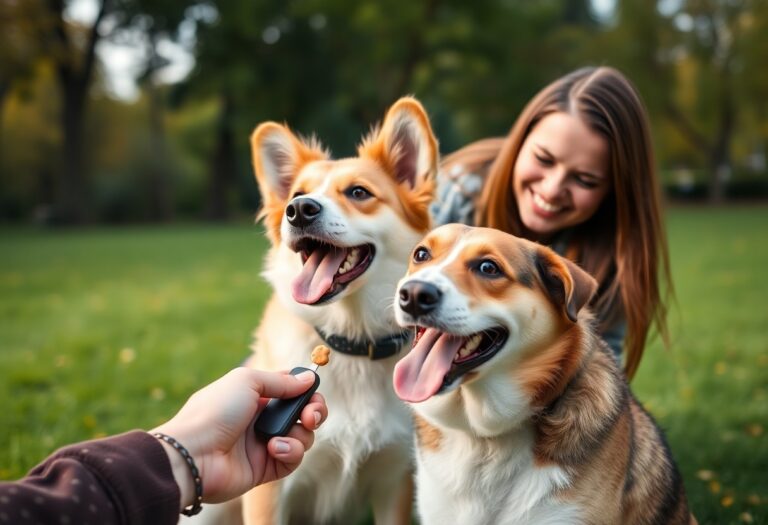You have the opportunity to enhance your bond with your dog by teaching them five imperative commands that are vital for their safety and your peace of mind. These commands can help prevent dangerous situations and encourage good behavior in various environments. By engaging in consistent training, you can instill positive habits in your canine friend, ensuring they are well-mannered and responsive. In this post, we’ll cover these imperative commands and offer practical tips to help you and your dog thrive together.
The Command That Transforms Chaos into Calm: “Sit”
The Importance of “Sit” in Everyday Situations
Mastering the “Sit” command can significantly improve your dog’s behavior in a variety of everyday scenarios. For instance, having your dog sit at the door before going for a walk not only sets a peaceful tone for the outing but also helps prevent them from bolting outside before you’re ready. This simple command reduces the potential for accidents and ensures a safer experience for both of you. Similarly, asking your dog to sit before meal times creates a calm environment, reinforcing the idea that good manners will be rewarded.
Moreover, the “Sit” command acts as a foundation for other training commands. It’s a great way to redirect unwanted behaviors—like jumping on guests or barking for attention. By instructing your dog to sit, you replace these disruptive actions with a more desirable behavior, making social interactions more pleasant for everyone involved. Ultimately, when you consistently use “Sit” in different contexts, you’re not just creating a well-mannered companion but also establishing a line of communication with your dog that promotes trust and respect.
Step-by-Step Instructions for Teaching “Sit”
To teach your dog the “Sit” command effectively, follow these simple steps that create a positive learning environment. Begin in a quiet space with minimal distractions. Use a treat to motivate your dog—hold it close to their nose and gradually move it up, encouraging them to raise their head. As they bring their head up to follow the treat, their bottom will naturally lower. The moment your dog’s rear end touches the ground, proudly say “Sit” and offer the treat as a reward. Consistent repetition will help your dog associate the command with the action.
Be patient throughout this training process. Some dogs may catch on quickly while others may need more time to grasp the concept. Always keep your tone upbeat and use plenty of praise. Just a few short training sessions of about 5-10 minutes each day can lead to progress. Over time, gradually reduce the number of treats while continuing to praise your dog for sitting on command.
Step-by-Step Instructions for Teaching “Sit”
| Step | Instruction |
|---|---|
| 1 | Find a quiet place with minimal distractions. |
| 2 | Hold a treat near your dog’s nose. |
| 3 | Lift the treat upwards, causing your dog’s head to raise. |
| 4 | As their bottom touches the ground, say “Sit” enthusiastically. |
| 5 | Immediately reward them with the treat and plenty of praise. |
| 6 | Repeat several times, always maintaining a positive tone. |
Including diverse practice times—like sitting when you receive guests or before going for walks—will help cement the command as a meaningful part of your dog’s routine. Each interaction reinforces their understanding and compliance, fostering a loyal and obedient companion. This successful learning not only benefits your dog’s discipline but also cements your bond as a team working towards a common goal.
Building a Foundation for Safety: “Stay”
The Role of “Stay” in Emergency Scenarios
The command “Stay” serves as a vital tool in situations where every second counts. Imagine your dog suddenly spots a squirrel and bolts toward a busy street. If your dog has mastered “Stay,” you can prevent potential disasters by keeping them in place until it is safe to move. This command can help avoid accidents by allowing you to control their movements, especially in unpredictable environments. You might find yourself in situations like family gatherings or outdoor events where distractions abound; having a reliable “Stay” can prevent your dog from overwhelming guests or getting into trouble.
Techniques to Make “Stay” Unbreakable
Achieving an unbreakable “Stay” requires consistent practice and positive reinforcement. Start with your dog in a calm environment, gradually increasing distractions as they improve. Begin by asking your dog to sit, then give the “Stay” command as you take a few steps back. If your dog remains in position, reward them immediately with a treat or praise. Continue expanding the distance and duration of the command without allowing them to break formation. Incorporate variations by using different commands or movements afterward to challenge their focus without breaking “Stay.”
Routine practice can solidify your dog’s understanding of “Stay.” Take them to various settings – quiet parks, busy streets, or even the comfort of home – to reinforce this command in different contexts. Making it a game by introducing longer waits followed by exciting rewards helps maintain their enthusiasm. Ensuring you remain consistent with your cues and expectations while providing ample praise when they successfully adhere to the command creates a stronger bond of trust. Over time, your dog will learn that staying put not only keeps them safe but also brings about positive outcomes, reinforcing the reliability of the command in every situation.
The Unwavering Recall: “Come”
Why “Come” Is Crucial for Off-Leash Adventures
Having a solid recall command means you can exercise your dog off-leash with confidence. This command is not just for show; it can be a matter of safety. Imagine your dog spotting a squirrel or another dog and taking off. A reliable *”Come”* can help ensure they return to you promptly, reducing the risk of accidents or confrontations. Off-leash excursions become less stressful and more enjoyable when you trust your furry companion to return immediately. There’s no better happiness than letting your dog explore the world freely, knowing they’ll come back to you every time.
Strategies for Teaching a Reliable Recall
Teaching your dog to come on command involves a blend of positive reinforcement and consistency. Start in a controlled environment with minimal distractions. Use treats or your dog’s favorite toys to create a positive association with the command. Call your dog using the command *”Come”* in an enthusiastic tone, ensuring your dog sees you when you say it. When they respond, celebrate with lots of praise and a treat. Gradually increase the distance between you and your dog, making sure to reward them each time they return. Consistently practicing this recall in various environments helps solidify their understanding and builds their eagerness to come back to you.
Incorporating games into training can also enhance your dog’s recall skills. For example, play a game of hide and seek or utilize a long leash during outdoor playdates. These playful tactics can turn training sessions into fun experiences, therefore solidifying their desire to return when called. You might also consider using a whistle if you find it more effective than your voice; the distinct sound can capture your dog’s attention and make recall more reliable in noisy environments.
Cultivating Patience and Control: “Wait”
The Behavioral Benefits of Teaching “Wait”
Teaching your dog the “Wait” command instills a sense of self-control that can improve their overall behavior. This command is particularly beneficial in dynamic environments where distractions are plentiful, such as parks or busy streets. By having your dog learn to “Wait,” you’re encouraging them to pause and assess their surroundings, fostering a sense of calmness before engaging with stimuli. This enhanced self-regulation can lead to fewer impulsive behaviors like jumping, darting, or barking at distractions.
Additionally, mastering “Wait” can enhance your dog’s focus on you, strengthening your bond. Your pet learns to trust your cues and judgments, which can lead to better responses in other commands. This not only improves their behavior but can also contribute to a safer environment by checking their instincts and minimizing their risk of getting into trouble. Over time, this command can enhance your daily routines and make outings more enjoyable.
Training Drills to Reinforce “Wait”
Start with simple exercises that gradually incorporate more complexity. One effective drill is to set up a controlled scenario where your dog anticipates a treat. Present a treat and say “Wait,” holding the treat in front of them before slowly moving it away. If they move before being released, calmly reset and try again. Once they can maintain their position for a short duration, start increasing the distance and duration of the wait. Aim for about five seconds initially and gradually build up to longer intervals.
After your dog has grasped the concept of “Wait,” you can introduce real-world distractions to practice this command in more challenging environments. For instance, during a walk, have your dog wait at crosswalks, or establish a “wait” command before entering your house or car. Practicing in varied situations will enhance their ability to remain in a waiting state despite environmental temptations. Consistent short training sessions, combined with positive reinforcement like treats or praise, will create lasting habits.
Encouraging Positive Interactions: “Leave It”
The Significance of “Leave It” for a Well-Mannered Dog
Instilling the command “Leave It” in your dog’s repertoire is invaluable for their safety and social development. This command empowers your dog to ignore distractions, such as tempting treats on the ground or inappropriate items, which could lead to harmful situations. For instance, if you encounter something dangerous—like broken glass or poisonous plants—having a reliable “Leave It” ensures your dog doesn’t indulge in these hazards. Over time, your dog will learn to redirect their focus, promoting better manners around food, as well as enhancing their overall leash etiquette during walks.
Beyond safety, “Leave It” also cultivates respect for your commands and strengthens your bond. By learning this command, your dog develops discipline and the ability to think independently. This can lead to improved interactions with other pets and humans, as your dog becomes more attuned to your expectations in various environments. The presence of this command will ease your stress in public settings and foster a far more manageable experience during training, playdates, or family gatherings.
Practical Exercises for Mastering “Leave It”
To effectively teach your dog “Leave It,” start with simple exercises that reinforce the command in a controlled environment. A common method involves placing a treat in your open palm, letting your dog sniff it without consuming it. As soon as your dog attempts to grab the treat, gently close your hand and say “Leave It.” Once your dog withdraws, offer a different reward, like a treat from your other hand, reinforcing the positive behavior. Repeating this will help your dog understand the concept of ignoring certain distractions for better rewards.
Taking the command outdoors will further solidify its importance. Begin by walking your dog on a leash and deliberately placing treats on the ground within your dog’s reach. When your dog shows interest, firmly but calmly say “Leave It.” Praise them when they obey and redirect their attention away from the treat. Gradually introduce more challenging environments with enticing distractions to test your dog’s response and consistency with the “Leave It” command.
To deepen your understanding and effectiveness of practicing “Leave It,” spend time gradually increasing the complexity of the scenarios. Start in quiet areas and as your dog masters these exercises, move to busier parks or bustling sidewalks. This incremental exposure helps your dog adapt to managing distractions in various settings, ultimately leading to a well-behaved companion capable of handling any situation confidently.
Summing Up
Hence, teaching your dog these five important commands is not only beneficial for obedience but also enhances the bond between you and your pet. By mastering commands such as sit, stay, come, down, and heel, you create a framework for effective communication, making everyday situations easier and more enjoyable. Furthermore, instilling these commands fosters a sense of security for your dog, allowing them to navigate their environment with confidence and assurance.
Additionally, consistent practice and positive reinforcement in your training sessions will pave the way for long-lasting results. As you invest time into this process, you’ll begin to notice significant improvements in your dog’s behavior, leading to a more harmonious household. Ultimately, establishing these fundamental commands lays the groundwork for a well-mannered, happy pet that enhances your life together.







